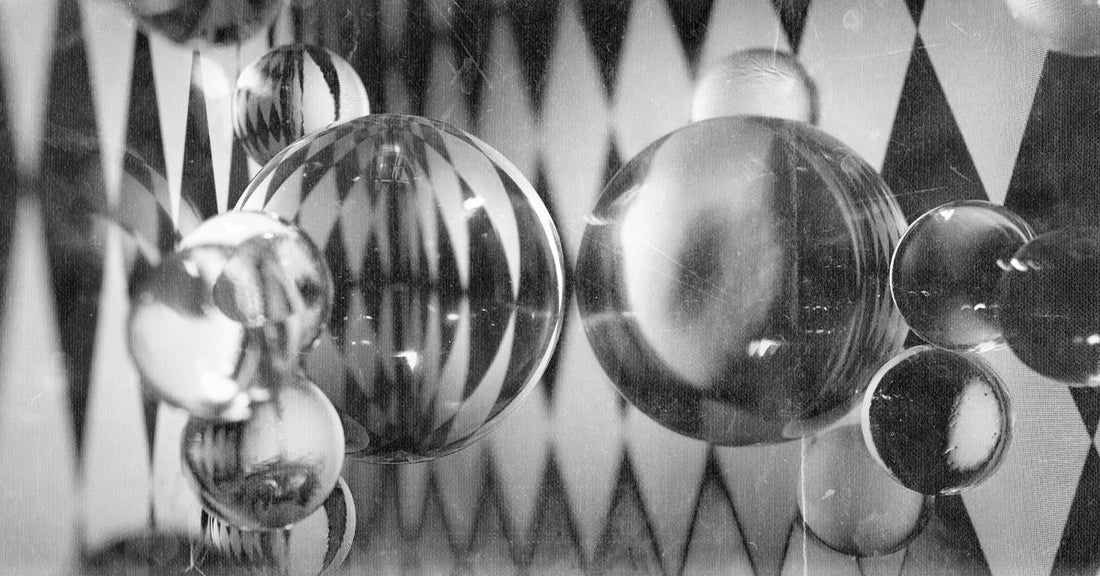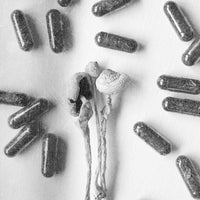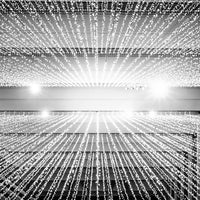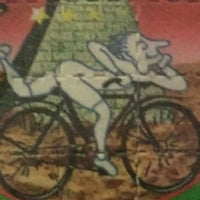Psychedelics is a broad term for substances that have major chemical effects on the brain, often causing hallucinations or erratic behavior in those who take them. The term psychedelic stems from the substances being “psychoactive” because of its ability to drastically change the chemical balances in the brain, often causing the sensory overload that can lead to hallucinations.
Psychedelics have been portrayed in popular media throughout modern media culture. You may be familiar with the wild visuals in the film Fear and Loathing in Las Vegas, where Johnny Depp and his cohort have been taking mescaline— the psychoactive chemical in peyote. Even pop culture phenomenons The Simpsons and Family Guy have created visuals of what people experience while on substances like peyote and psilocybin(or magic) mushrooms.
These depictions are, of course, the exaggeration of what psychedelics really are; however, the heavier doses of potent chemicals have been known to cause vivid hallucinations and break down inhibitions.
Below is a list of the most well-known psychedelics:
LSD - synthesized acid most commonly used in the ’60s and still one of the more popular forms of acid used recreationally today
Psilocybin Mushrooms - a natural fungus used by humans for centuries, also known as “magic” mushrooms
PCP - a powerful psychedelic once used in medicine; use was discontinued due to its side effects
Mescaline - more commonly referred to as the plant it comes from, peyote
MDMA - the active chemical compound in drugs like ecstasy and molly
Ketamine - similar to PCP, ketamine was designed to be used as an anesthetic but had to be restricted from human medical use as it would cause memory loss
DMT - found in certain plants grown in the Amazon forest, DMT can also be synthesized in a lab
A Brief History of Psychedelics
The oldest cultures in the world covet psychedelics as “sacred” plants: natural hallucinogens like mushrooms and peyote were used in ceremonies by shamans or taken as test or initiation. Though psychedelics are ancient tools used by cultures throughout history, it wasn’t until the 1900s when the modern world rediscovered these mind-altering substances.
By the 1940s, the psychoactive effects of LSD had been isolated by medical professionals and were beginning to be used by psychologists as a method of therapy. In controlled environments and doses, researchers found there to be a great success in helping patients, according to the records of those who used LSD.
Unfortunately, as the use of psychedelics in medicine grew, so did their popularity with the public. Authors, painters, and icons like The Beatles brought LSD and psychedelics to the forefront of pop culture, and the layman began to abuse psychedelic substances recreationally. Not to mention the overuse of LSD by psychotherapists and other researchers, it was incredibly easy for a therapist to get as much LSD as they wanted! Professionals were throwing parties and giving away LSD to their families.
The greatest criticism of the research and results from this era is insufficient data. Though the reports were glowing, the early psychedelic trials were filled with error. Researchers were not following up properly with their test subjects and were not keeping sufficient records of data. The research, as it was, was not designed properly.
By the 1970s, the laws and regulations on psychedelics caught up to culture, banning the use of psychedelics and creating the drug schedules that you may be familiar with today. LSD could no longer be used in therapy, and only approved organizations could have access to it for research.
Psychedelics were thought to cause psychosis, be harmful physiologically, and risky for public use.
Psychedelic Categories
Psychedelics are broken into three categories with different effects on the chemicals in the brain, though serotonergic class psychedelics are the most commonly recognized and portrayed.
Serotonergic
These are psychedelics that pump up the serotonin levels in the brain; they overload the senses and can cause hallucinations. The most common serotonergic psychedelics are LSD, mescaline, and DMT; these are the chemical compounds that create the reaction in the brain.
Each psychedelic substance has a different level of potency and effect on the user.
Dissociatives
Dissociative psychedelics are the depressant of the categories; this psychedelic “derealizes” the user and isolates them into their own world. Common psychedelic dissociatives are ketamine and PCP. They were originally isolated for use in sedatives and amnesia. PCP is no longer used due to its potency and the memory loss of patients.
Empathogens
Empathogenic psychedelics affect the intensity of emotion and feeling in the brain. This category of psychedelic causes the release of both serotonin and dopamine. MDMA, the active chemical in ecstasy, is known for its euphoric effect on its users because of its empathogenic nature.
Psychedelics Today
Psychedelics are still popular in Western and Eastern cultures today, recreationally, and in the medical world. In fact, there has been a medical revival of the studies being done in humans and psychedelics. Psychologists are beginning to study the benefits of a variety of psychedelics, finding that the psychoactive compounds can have a positive effect on patients with mental disorders.
Modern research has shown that psychedelics may improve overall mental health with few adverse side effects. As long as the environment and dosing are controlled, studies imply that psychedelics may be used safely with little to no negative effects on the subject.
Microdosing
Though most psychedelic drugs are still illegal, regular people are starting to experiment with the benefits of taking psychedelics in small amounts. Microdosing has become a growing home therapy method among those seeking a variety of relief from mental disorders. When people microdose psychedelics, they take a very small amount of the substance to boost their mood or energy levels.
The science behind microdosing psychedelics is continuing to grow as more people are replacing their prescribed medicines with low amounts of psychedelics. In one study, it was found that people who were microdosing LSD over a period of time felt they had an improvement of mood and felt more creative.
It is becoming increasingly popular for people to seek natural replacements to the drugs that have been pumped through the market. Microdosing psychedelics could be the secret to finding the medical benefit of these natural psychoactive drugs.
Negative Effects
Many professionals and members of the public still frown upon the use of psychedelics in the medical world. The history of faulty research and recreational abuse has deterred many professionals from returning to the subject.
There is always the risk of substance abuse of medicine; however, the pain medicines that are used today can be more addictive than psychedelics. There are no addictive properties in psychedelics, though it is still possible for people to become addicted to the sensations psychedelics cause.
It is virtually unheard of for people to overdose on natural psychedelics, though it can lead you to make risky decisions and lack control. The physiological effects psychedelics can have often include nausea, high blood pressure, and increased heart rate. Long term use of psychedelics can sometimes lead to prolonged psychosis, but this is very rare.
The negative effects of psychedelics are often blown out of proportion and exaggerated beyond the normal. When on a psychedelic trip, people’s inhibitions are often thrown out the window, leading them to do things that they otherwise wouldn’t do— this is possibly the greatest risk of taking psychedelics.
What are Psychedelics?
Psychedelics are psychoactive chemical compounds that cause the brain to react in a non-psychonormative way. The chemicals often cause a sensory overload, causing hallucinations that can be audible or visual. When taken in small doses, some believe that psychedelics have moderate benefits for holistic health.
Psychedelics are classified as a schedule 1 drug, meaning they are widely believed to have no medical use and have a high likelihood of abuse. Although there are studies that say otherwise, psychedelics remain classified as such across the globe.
Modern western medicine is beginning to revisit the potential for psychedelic therapy, conducting new research in controlled environments. Herbalists and those that practice eastern medicine have found medical use for psychedelics for centuries.
Microdosing psychedelics is a growing practice among people seeking holistic cures to mental disorders and other physiological ailments. Microdosing is done regularly and, according to many users, has no hallucinogenic or major psychoactive effect on the user.
Conclusion
Whatever your personal stance is on psychedelics, we hope that this guide gives you more understanding of this world. Weighing the benefits and risks is important for anyone looking to dabble in psychedelics. It's also important to break the stigma with real, well-researched facts. Check out some of our other articles to learn more about psychedelics, here and here.
Sources
Link 1 - https://www.ncbi.nlm.nih.gov/pmc/articles/PMC4813425/
Link 2 - https://oceanbreezerecovery.org/dmt-drug/
Link 3 - https://oceanbreezerecovery.org/blog/psychedelic-drugs/
Link 4 - https://www.ncbi.nlm.nih.gov/pmc/articles/PMC4592297/
Link 5 - https://harmreductionjournal.biomedcentral.com/articles/10.1186/s12954-019-0308-4




